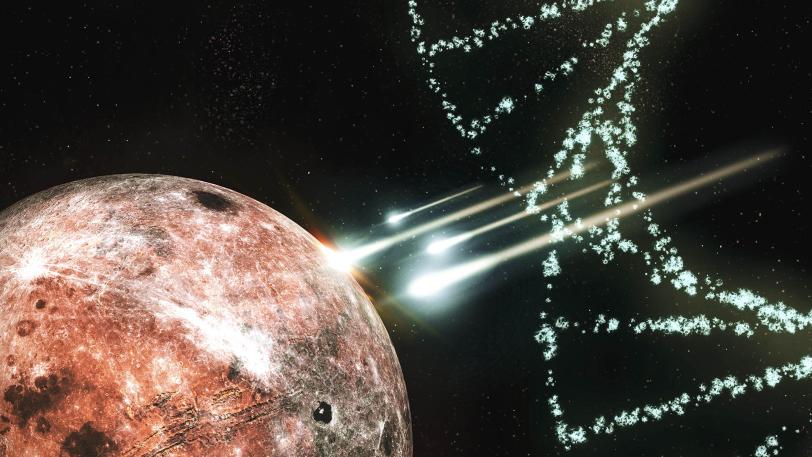When and where life originated on Earth – and if, or where, life exists elsewhere in the cosmos – are some of the biggest scientific questions of our time. Even the origin of the basic materials needed for life is a mystery. Meteorites and comets are often cited as potential sources of simple organic molecules. When these impact Earth, they experience extreme conditions – pressures a million times higher than the atmospheric pressure at Earth’s surface and temperatures as hot as the surface of the sun. Under these conditions, the simple molecules can reform into more complex and novel structures, including nucleotide bases for RNA and DNA. We can study how these organic fragments form and how they can build up complex products using SLAC’s X-ray free-electron laser. With observations that take place in a tiny fraction of a second, we can shock-compress materials to create extreme conditions and visualize the breaking and forming of chemical bonds. In this presentation, I will show how this technique may hold the key to revealing the origin of life via complex chemical dynamics taking place on ultrafast time scales and at ultrahigh pressures and temperatures.
Shocking Origin: Meteor Impacts and the Chemistry of Life
Presented by Arianna Gleason
About Arianna Gleason
Arianna Gleason received her PhD in earth and planetary science from the University of California, Berkeley in 2010. After a postdoctoral appointment at Stanford University, she worked at Los Alamos National Laboratory in the shock and detonation physics group. She joined SLAC in 2018 as a staff scientist. Her passion is visualizing the behavior and response of materials across all length scales in the most extreme environments possible in nature – from planetary cores to stellar interiors. This allows her to uncover nature’s secrets of high-pressure mineral physics and planetary evolution from the atomic level up. In 2019, she received the Department of Energy Office of Science Early Career Award in fusion energy science.
As an undergraduate at the University of Arizona, Gleason worked for Spacewatch, searching for Near Earth Objects. She was fortunate to discover the short period comet now called Gleason and the Main Belt Asteroid 10639, named Asteroid Gleason in 2001. Now she seeks to understand how collisions of objects like these with Earth may initiate life.
Shocking Origin: Meteor Impacts and the Chemistry of Life
Presented by Arianna Gleason

Shocking Origin: Meteor Impacts and the Chemistry of Life
Public lecture presented by Arianna Gleason
SLAC National Accelerator Laboratory
10:00–11:00 a.m. PDT